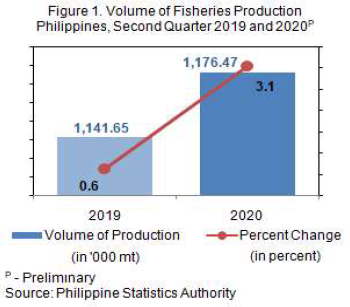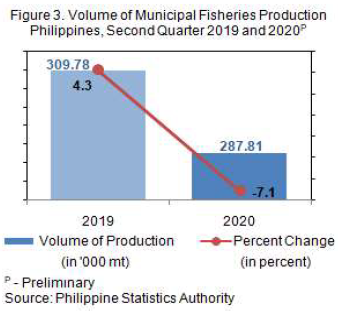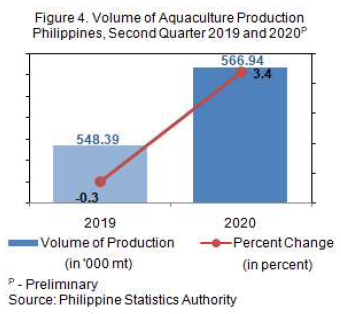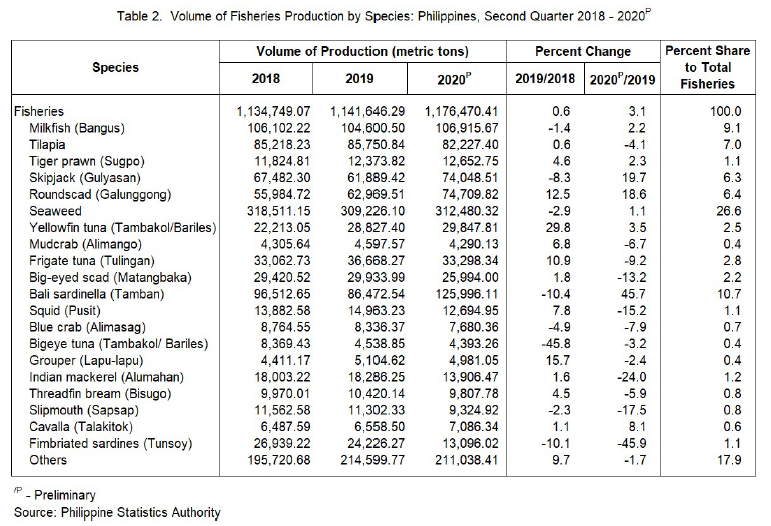 |
 |
The total volume of fisheries production was estimated at 1,176.47 thousand metric tons during the second quarter of 2020. This reflects an improvement of 3.1 percent from the previous year’s same quarter output of 1,141.65 thousand metric tons. Among the fisheries subsectors, volume of production in commercial fisheries and aquaculture exhibited increments while municipal fisheries showed decline in output. (Figure 1 and Table 1)
During the quarter, commercial fisheries volume of production was estimated at 321.72 thousand metric tons, which was 13.5 percent higher than the previous year’s record of 283.47 thousand metric tons. The subsector comprised 27.3 percent of the total fisheries production. (Figure 2 and Table 1)
 |
 |
Municipal fisheries subsector reported an output reduction of 7.1 percent. The volume of production during the quarter was registered at 287.81 thousand metric tons from the 309.78 thousand metric tons a year ago. Of the total volume of production, 88.7 percent came from unloadings from landing centers while the rest were caught from inland bodies of water. Municipal fisheries shared 24.5 percent to the total fisheries production. (Figure 3 and Table 1)
The volume of harvests from aquaculture farms went up to 566.94 thousand metric tons during the period, higher by 3.4 percent compared with the previous year’s same quarter output of 548.39 thousand metric tons. The share of aquaculture subsector to the total fisheries was 48.2 percent. (Figure 4 and Table 1)
Of the 20 major species, double digit production increments were noted in bali sardinella (tamban) (45.7%), skipjack (gulyasan) (19.7%), and roundscad (galunggong) (18.6%).
Likewise, cavalla (talakitok), yellowfin tuna (tambakol/bariles), tiger prawn (sugpo), milkfish (bangus), and seaweed posted improvements in output.
On the other hand, decreases in production were primarily displayed by fimbriated sardines (tunsoy) (-45.9%), indian mackerel (alumahan) (-24.0%), slipmouth (sapsap) (-17.5%), squid (pusit) (-15.2%), and big-eyed scad (matangbaka) (-13.2%). (Table 2)


DENNIS S. MAPA, Ph.D.
Undersecretary
National Statistician and Civil Registrar General
Note:
Previous data reported as Indian oil sardines (Sardinella longiceps) is the Bali sardinella (Sardinella lemuru) as per BFAR Administrative Circular Oder No. 1 Series of 2019 and PSA approved memorandum of Correcting Nomenclature of Indian oil sardines to Bali sardinella dated 03 July 2019
